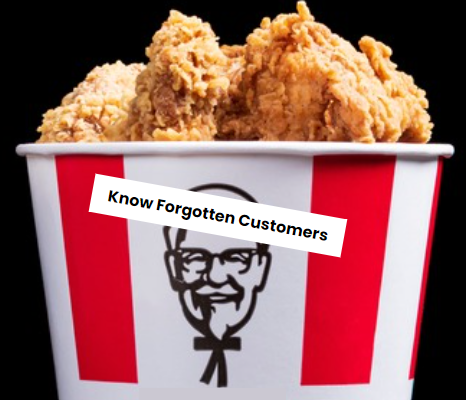In today’s competitive marketplace, knowing your customers isn’t just a nicety—it’s a necessity. Businesses that deeply understand their customers are better positioned to meet their needs, build strong relationships, and drive long-term success.
Here’s why knowing your customers is crucial:
1. Personalised Experiences 🎯
Customers crave personalised experiences that make them feel valued and understood. By knowing your customers’ preferences, behaviours, and pain points, you can tailor your products, services, and communications to meet their specific needs. Personalization secures loyalty and sets your business apart in a crowded market.
Personalization extends beyond using a customer’s name in an email. It involves understanding their purchasing history, predicting their future needs, and offering relevant recommendations. This level of customization shows customers that you genuinely care about their satisfaction.
2. Improved Customer Satisfaction 🤗
A deep understanding of your customers allows you to anticipate and address their needs proactively. By delivering solutions that resonate with them, you enhance their overall satisfaction. Satisfied customers are more likely to become repeat buyers and advocates for your brand.
Regularly gathering feedback through surveys, reviews, and direct interactions helps identify areas for improvement. Acting on this feedback demonstrates your commitment to continuous improvement and customer-centricity.
3. Enhanced Marketing Strategies 📅
Knowing your customers informs your marketing strategies, making them more effective and cost-efficient. When understanding demographics, preferences, and buying behaviour enables you to segment your audience and tailor your messages accordingly. Targeted marketing efforts lead to higher engagement and conversion rates.
Data-driven insights allow for precise targeting and personalised content creation. This approach ensures that your marketing budget is spent wisely, reaching the right audience with the right message at the right time.
4. Product Development and Innovation 💡
Customer insights are invaluable for product development and innovation. By understanding what customers want and need, you can create products and services that solve their problems and add value to their lives. This customer-centric approach to innovation drives business growth and market relevance.
Involving customers in the product development process through surveys, focus groups, and beta testing can provide direct feedback and uncover unmet needs. This collaborative approach increases the likelihood of launching successful products that resonate with your target market.
5. Increased Customer Loyalty 💫
Building strong relationships with customers fosters loyalty. When customers feel understood and appreciated, they are more likely to stick with your brand. Loyal customers are also more likely to refer your business to others, amplifying your reach through word-of-mouth marketing.
Loyalty programs, personalised rewards, and consistent engagement through multiple channels help nurture these relationships. Showing appreciation for their loyalty can turn customers into brand ambassadors.
How best to get to know your customers.
1. Conduct Surveys and Feedback Forms 📃
Surveys and feedback forms are effective tools for gathering direct insights from your customers. By asking targeted questions, you can uncover valuable information about their preferences, behaviours, and pain points. Ensure your surveys are concise, relevant, and easy to complete to encourage participation.
To get the most out of surveys, tailor questions to different segments of your customer base. Use a mix of quantitative (e.g., rating scales) and qualitative (e.g., open-ended questions) methods to gain a comprehensive understanding. Analysing the collected data helps identify trends and areas for improvement.
2. Leverage Social Media Listening 🤳🏽
Social media platforms are a goldmine for understanding customer sentiment and preferences. By monitoring conversations, comments, and mentions related to your brand and industry, you can gain real-time insights into what customers are saying and feeling.
Utilise social media listening tools to track keywords, hashtags, and competitor mentions. Engage with customers by responding to comments and messages, showing that you value their input. Social media listening helps you stay attuned to customer needs and emerging trends, enabling proactive adjustments to your strategies.
3. Implement CRM Systems 💻
CRM systems are essential for managing and analysing customer interactions and data. By consolidating customer information in one place, CRMs provide a holistic view of your customers’ history, preferences, and behaviours. This centralised data helps you personalise communications and anticipate customer needs.
Use CRM tools to segment your customer base, track interactions, and automate follow-ups. Regularly review CRM analytics to identify patterns and opportunities for improvement. A well-maintained CRM system enhances your ability to build strong, long-lasting relationships with customers.
4. Conduct Focus Groups and Interviews 🗣️
Focus groups and one-on-one interviews allow for in-depth exploration of customer opinions and experiences. These methods provide qualitative insights that go beyond what can be captured in surveys and social media analysis. They enable you to ask probing questions and gather detailed feedback.
Select a diverse group of participants to ensure a range of perspectives. Prepare open-ended questions that encourage discussion and provide a comfortable environment for participants to share their thoughts. The insights gained from focus groups and interviews can inform product development, marketing strategies, and customer service improvements.
5. Analyze Customer Data and Behavior 🔢
Analysing customer data from various touchpoints, such as purchase history, website interactions, and email engagement, provides a wealth of information about customer preferences and behaviours. This data helps identify trends, preferences, and areas where customers may encounter difficulties.
Use analytics tools to track key metrics to understand customer lifetime value (CLV), churn rate and conversion rates. This will help you to segment data by demographics, purchasing behaviour, and engagement levels, leading to tailored your strategies accordingly. Data-driven insights enable more informed decision-making and a deeper understanding of your customer base.
If you like to speak more about business – just reach out! See some more business thoughts that I have written about here : https://elev8now.co.uk/blog/


